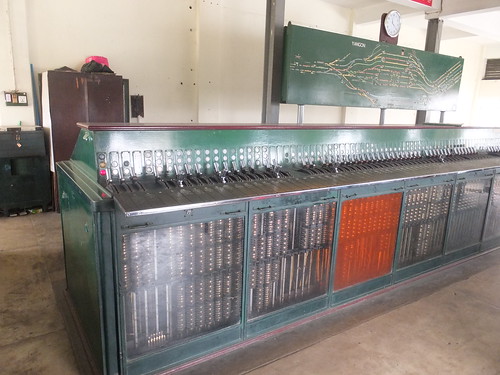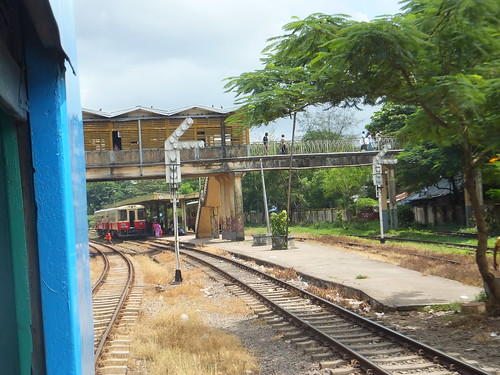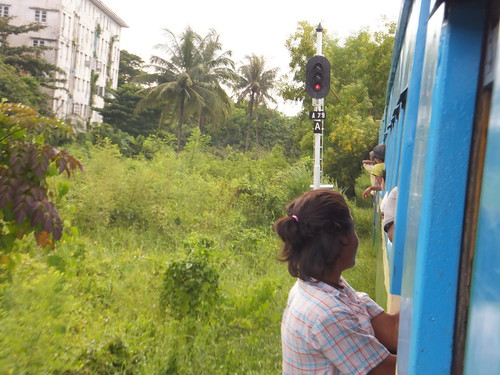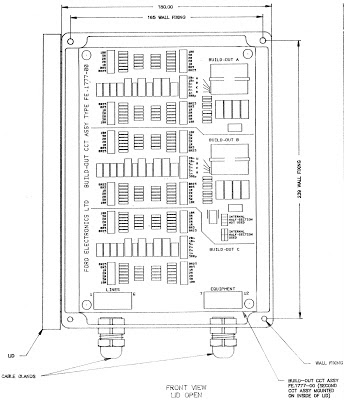A. F. Bound (Photo from 'A Pictorial Record of L.M.S. Signals, see reference 1 below).
Arthur Frank Bound was a pupil of Billington on the L.B.S.C. before working with the British Pneumatic Railway Signal Company. This led to an interest in modern signalling methods (and membership of the signal section of the American Railroad Association). In 1906 he was appointed Assistant Signal Superintendent and later Signal Superintendent of the Great Central Railway at Guide Bridge, Manchester.
An advert for the British Pneumatic Railway Signal Company which appeared in 'Power Railway Signalling' published 1908 (reference 2).
He became a Member of the fledgling Institution of Railway Signal Engineers in 1913. In 1915 he read his Paper 'A Review of the Art of Signalling, and some Suggestions' at the A.G.M. in February. This gave rise to Discussions firstly on the day, later in March and April with Bound's Reply in June. The initial paper, the Discussions and the Reply are available online here). By 1916 Bound had become a Member of the Council of the Institution.
In 1924, he was the LNER Signal Engineer (Southern Area) based at Liverpool street Station, London and he became Vice-President of the Institution of Railway Signal Engineers the same year. The following year, he served as President of the Institution.
The combination of progressive, incisive thinking with consideration towards his staff earned him great respect.
In 1929 he joined the LMS as Chief Signal & Telegraph Engineer. He embarked on a long-term program of risk reduction by converting semaphore Distants to colour light signals to reduce the chances of a 'missed distant'. Bound also prioritised the introduction of track circuits and block controls, dealing with the biggest risks and the more important lines first.
In 1932, he was responsible for the 'Speed Signalling' experimental installation at Mirfield. This is described on the splendid site called 'The Signal Box' site in an article here.
Bound introduced a number of power signalling schemes, associated with more conventional colour-light signals such as the 1940 renewals at Crewe. This is mentioned in my post Crewe North Junction History and there's a set of pictures of the now-preserved Crewe North Junction Box here.
One of the two miniature lever frames in the preserved Crewe North Junction box.
But Bound's influence extended to the more mundane, such as signal box nameboards. Bound had been impressed by the Great Central practice of fixing a nameboard at each end of the box rather than on the side facing the track - much easier to sight from a train. After some experimentation, the standard L.M.S. signal box nameboard appeared in 1935, using six inch cast letters fixed to a 9-inch high wooden board with a three-quarter inch rounded bead. For more details, see the reference below.
 L.M.S. pattern nameboard applied to an L.N.W.R. signal box photographed at Brereton Sidings in 2007.
L.M.S. pattern nameboard applied to an L.N.W.R. signal box photographed at Brereton Sidings in 2007.
Over the years, A F. Bound left an indelible stamp on the signalling infrastructure of the L.M.S which survived long after he was succeeded by W. Wood in 1944.
Reference:
1. 'A Pictorial Record of L.M.S. Signals' by L. G. Warburton, published by Oxford Publishing Company in 1972 (available, for a price, on the second-hand market).
2. 'Power Railway Signalling' by H. Raynar Wilson published 1908. Reprinted in 3 parts by Peter Kay.
[Revised 4-Jan-2013]













